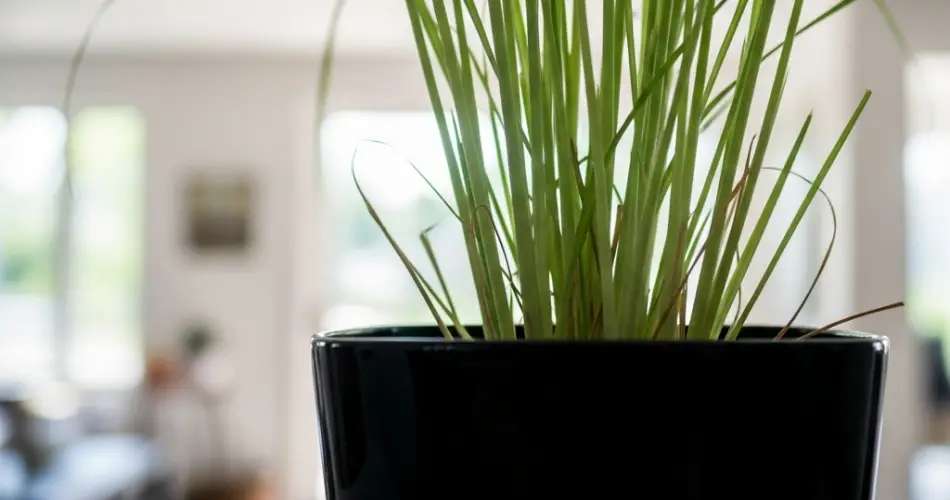Lemongrass is a fragrant herb commonly used in Asian and tropical cuisines. With its citrusy flavor and fresh aroma, it’s perfect for soups, teas, stir-fries, and marinades. While this tall, tropical grass is usually grown outdoors, it’s surprisingly easy to grow indoors — even right in your kitchen.
Whether you’re limited on outdoor space or simply want fresh herbs at your fingertips, here’s everything you need to know to grow lemongrass indoors successfully.
Why Grow Lemongrass Indoors?
Growing lemongrass indoors offers several advantages:
-
Year-round access to fresh stalks and leaves for cooking.
-
Convenient harvesting, especially if grown near your kitchen counter or windowsill.
-
Protection from frost and harsh weather conditions.
-
Aromatic indoor greenery that doubles as a natural air freshener.
Because lemongrass is both ornamental and useful, it’s a great addition to an indoor herb garden.
Starting Lemongrass Indoors
You can grow lemongrass from seeds, but the fastest method is to propagate it from fresh stalks — the kind sold in grocery stores or markets.
Steps to Propagate Lemongrass:
-
Select fresh stalks with firm bases and a little root nub if possible.
-
Trim the tops to about 6 inches.
-
Place the stalks in a glass or jar with about 1–2 inches of water.
-
Set the jar in a sunny windowsill or warm area.
-
Change the water every few days to keep it fresh.
In about 1–2 weeks, you should see roots forming at the base of the stalks and new green shoots sprouting from the top.
Transplanting into Containers
Once the roots are a few inches long, it’s time to move the lemongrass into a pot.
Choose a container that is:
-
At least 10–12 inches wide and deep
-
Has drainage holes at the bottom
-
Made from ceramic, plastic, or terracotta
Fill the pot with a light, well-draining potting mix, preferably one with compost or organic matter for nutrients. Plant the rooted stalks about 2 inches deep and gently press the soil around them.
Water thoroughly after planting.
Ideal Indoor Growing Conditions
Lemongrass thrives in warm, sunny conditions, so your indoor environment should mimic the tropics as much as possible.
Light:
-
Needs 6–8 hours of bright light daily.
-
Place near a south-facing window if possible.
-
If natural light is limited, use a full-spectrum grow light for best results.
Temperature:
-
Prefers 70–85°F (21–29°C).
-
Avoid cold drafts or sudden temperature drops.
Humidity:
-
Lemongrass loves humidity. Mist the plant occasionally or place a tray of water nearby to increase ambient moisture.
Watering and Feeding
Lemongrass prefers moist, but not soggy, soil.
-
Water when the top inch of soil feels dry.
-
Ensure proper drainage to avoid root rot.
-
During hot months, water more frequently.
-
Reduce watering slightly in cooler months, but don’t let the soil completely dry out.
Fertilize monthly with a balanced liquid fertilizer or compost tea during the growing season (spring through early fall). This helps support vigorous leaf and stalk production.
Pruning and Harvesting
As your lemongrass grows, it will form a dense clump of long, blade-like leaves and thick stalks.
-
Harvest by snipping outer stalks at the base when they reach ½ inch thick.
-
Leave the inner, younger stalks to continue growing.
-
Use the white portion of the stalk for cooking, and save the green leaves for making tea or infusions.
Regular harvesting encourages new growth and helps maintain a manageable size indoors.
Indoor Maintenance Tips
-
Rotate the pot weekly to ensure even light exposure and straight growth.
-
Remove dry or yellowing leaves to keep the plant tidy and healthy.
-
Repot every 6–12 months if the root system becomes crowded.
-
You can divide clumps and propagate new plants to expand your indoor herb garden or share with friends.
Common Problems
-
Brown leaf tips: Often caused by low humidity or underwatering. Mist more frequently or check watering routine.
-
Pale growth: Usually a sign of insufficient light. Move the plant to a brighter spot or add artificial lighting.
-
Slow growth: May be due to nutrient deficiency. Add a gentle fertilizer to support growth.
Lemongrass is generally pest-resistant, but keep an eye out for spider mites or aphids. A simple neem oil spray or wiping the leaves with a damp cloth can help control them.
Final Thoughts
Lemongrass is a low-maintenance yet highly rewarding herb to grow indoors. Its fresh scent, culinary value, and tropical flair make it a great addition to any kitchen garden. With a sunny spot, regular care, and a little patience, you’ll be enjoying your own homegrown lemongrass all year long — from stir-fries to herbal teas.



